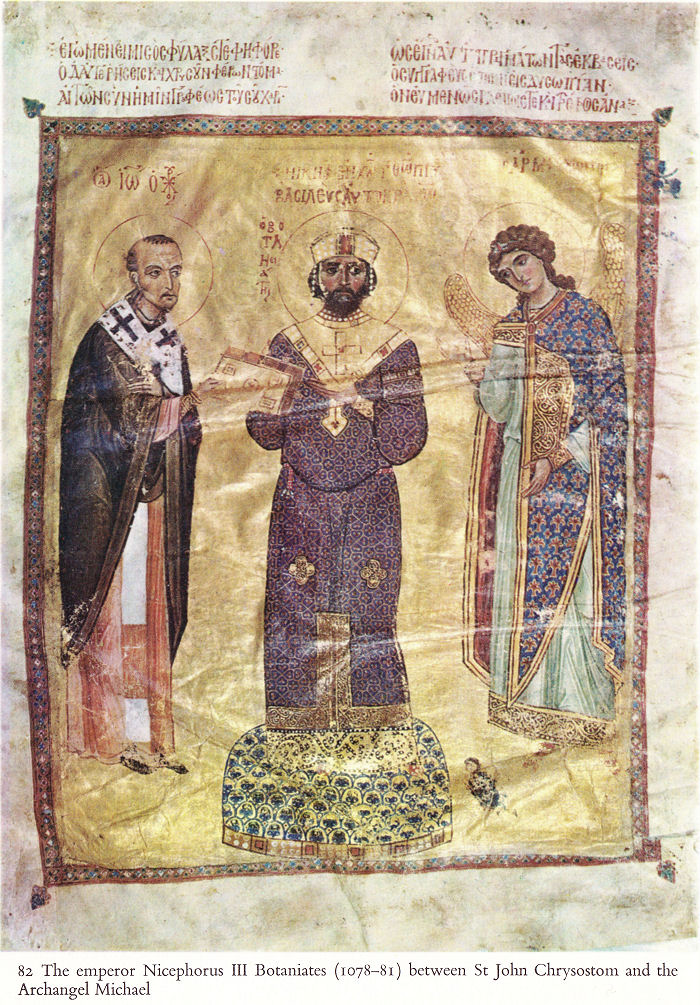(Colour plates)
8 Constantine presenting a model of the city to the Virgin; detail of a late tenth-century mosaic in Hagia Sophia
11 Constantinople at its greatest extent and prosperity, in the ninth to eleventh centuries. In the foreground is the Sea of Marmora; behind the city is the famous Golden Horn
15 This mosaic in the Church of S. Apollinare Nuovo in Ravenna shows ships at Classis, the port of that city
18, 19 Profane and sacred aspects of Coptic art. Wool embroidery of a dancer (left); wall painting of the Virgin and Child (right)
23, 24 Mosaic portraits of Justinian and Theodora in the Church of S. Vitale in Ravenna
25 Mosaic in S. Apollinare Nuovo showing the palace of Theodoric with the city of Ravenna in the background
46 The Bulgars’ invasion of Byzantine territory; illustrations in a twelfth-century Slavonic manuscript. In the lower half, Krum, king of the Bulgars, is taunting the captured emperor Nicephorus I
54 The Great Mosque of Damascus (715), an example of Islamic adaptations of Byzantine culture
55 The Thessalonican brothers Cyril and Methodius, ‘the apostles to the Slavs’, are shown in this eleventh-century fresco kneeling before Christ in the presence of St Andrew, St Clement and angels
56 ... The religious significance of the imperial office was expressed in many ways. Leo VI, ‘the Wise’, kneels before Christ in a mosaic in Hagia Sophia (opposite). ...
60 Basil II, ‘the Bulgar-slayer’, under whom the Byzantine state reached its last great peak of power
66, 67 Textile-workers were notable among Constantinople’s craftsmen. This silk-weaving of the mid-eighth century (left) shows two riders hunting lions. Below, detail of a late tenth-century silk shroud
68 This eighth-century silk textile portrays a lion strangler — Samson, or possibly Hercules
71 The monastery of St Catherine’s, built by Justinian, contains the only extensive collection of pre-iconoclast Byzantine images, including this sixth-century Virgin enthroned
74 Christ Pantocrator, ruler and stem judge. Dome mosaic at Daphni, near Athens, c. 1199
77 This enamelled container for a relic of the True Cross, decorated with jewels and cloisonne enamels, was made around 960
80 The monastic reaction against secular Hellenism. Paradise and the Four Rivers, from the twelfth-century Homilies of Jacob of Kokinobaphos
82 The emperor Nicephorus III Botaniates (1078-81) between St John Chrysostom and the Archangel Michael
8 Constantine presenting a model of the city to the Virgin; detail of a late tenth-century mosaic in Hagia Sophia
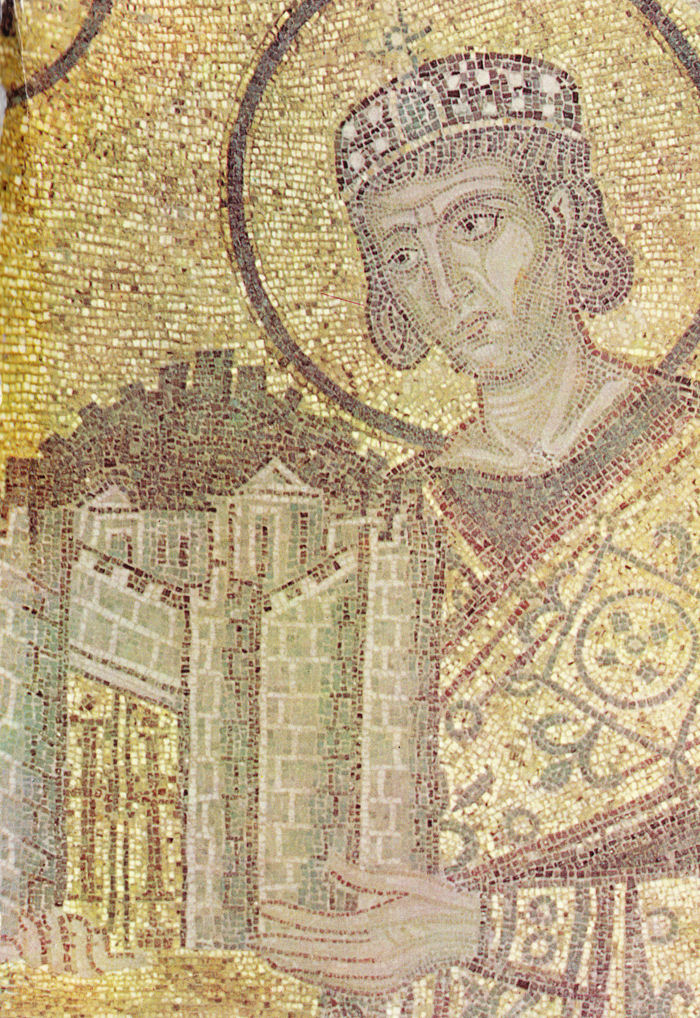
11 Constantinople at its greatest extent and prosperity, in the ninth to eleventh centuries. In the foreground is the Sea of Marmora; behind the city is the famous Golden Horn
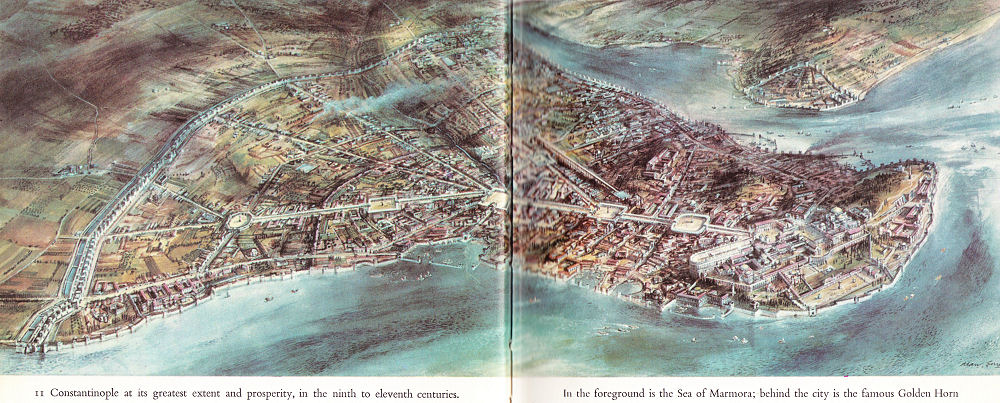
15 This mosaic in the Church of S. Apollinare Nuovo in Ravenna shows ships at Classis, the port of that city

18, 19 Profane and sacred aspects of Coptic art. Wool embroidery of a dancer (left); wall painting of the Virgin and Child (right)

23, 24 Mosaic portraits of Justinian and Theodora in the Church of S. Vitale in Ravenna
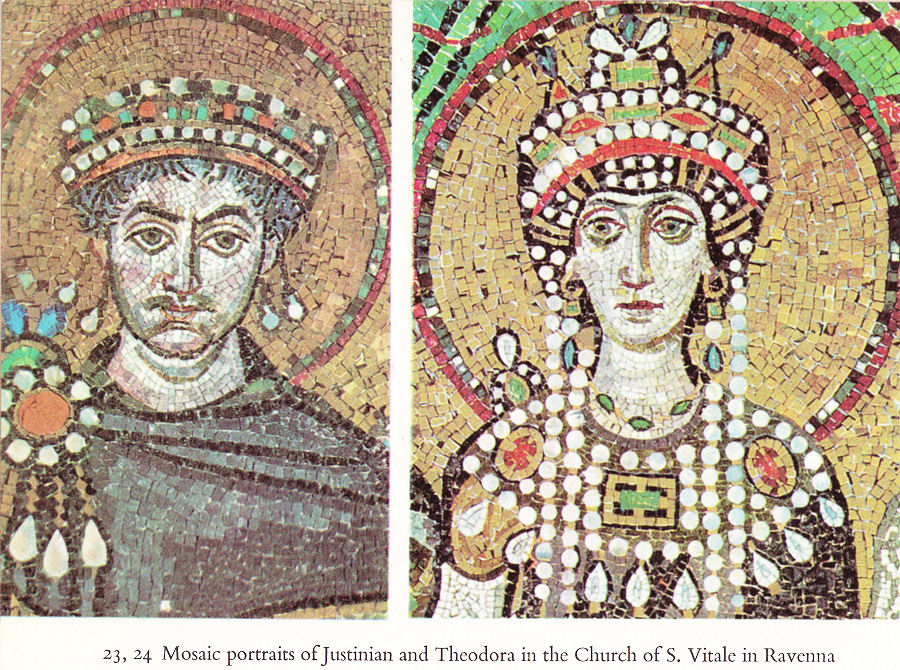
25 Mosaic in S. Apollinare Nuovo showing the palace of Theodoric with the city of Ravenna in the background
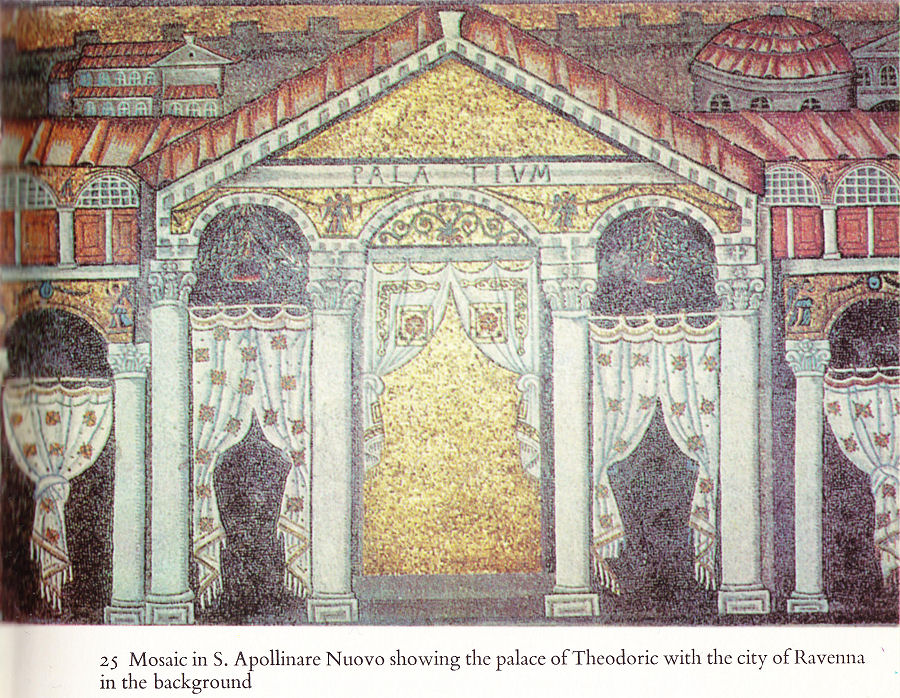
46 The Bulgars’ invasion of Byzantine territory; illustrations in a twelfth-century Slavonic manuscript. In the lower half, Krum, king of the Bulgars, is taunting the captured emperor Nicephorus I
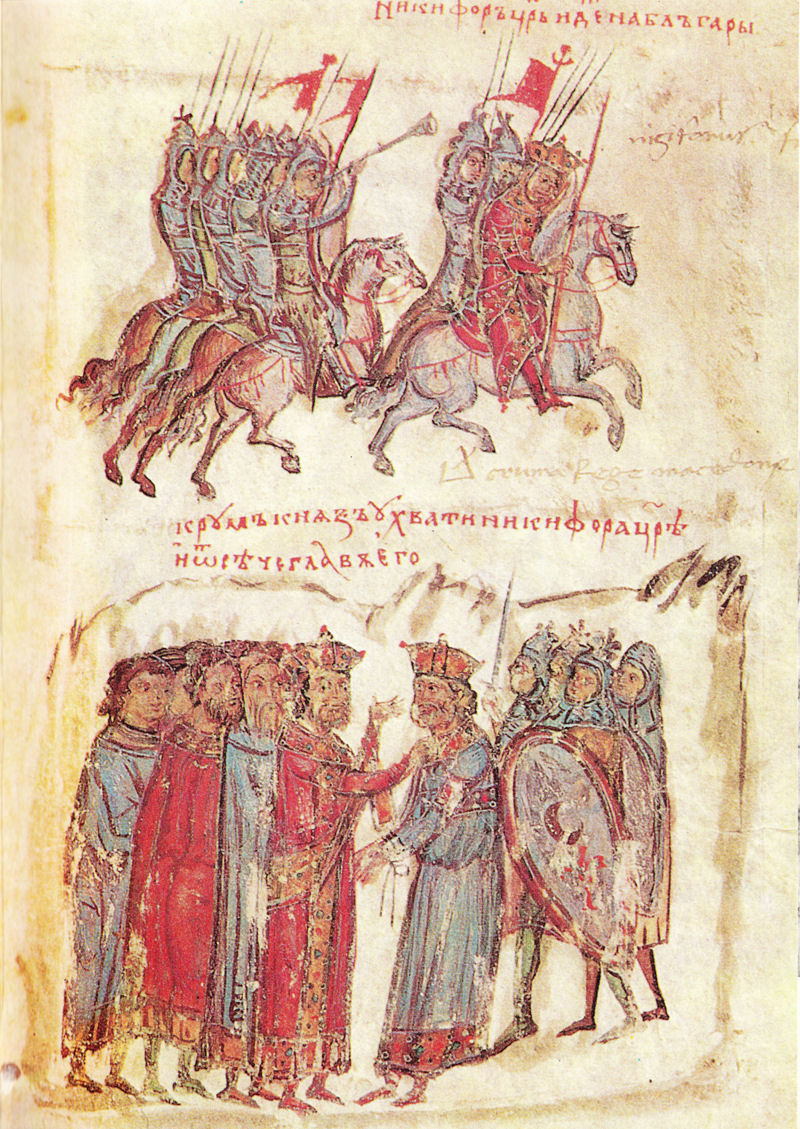
54 The Great Mosque of Damascus (715), an example of Islamic adaptations of Byzantine culture
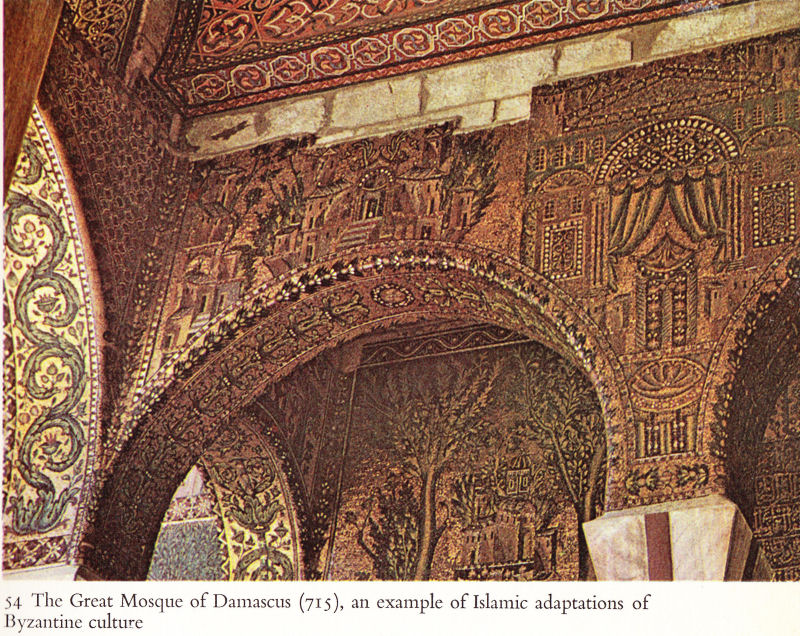
55 The Thessalonican brothers Cyril and Methodius, ‘the apostles to the Slavs’, are shown in this eleventh-century fresco kneeling before Christ in the presence of St Andrew, St Clement and angels

56 ... The religious significance of the imperial office was expressed in many ways. Leo VI, ‘the Wise’, kneels before Christ in a mosaic in Hagia Sophia (opposite). ...
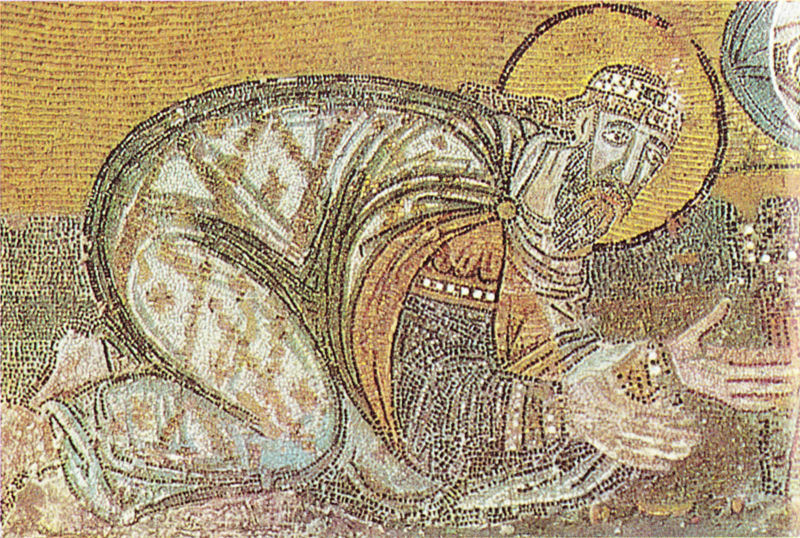
60 Basil II, ‘the Bulgar-slayer’, under whom the Byzantine state reached its last great peak of power
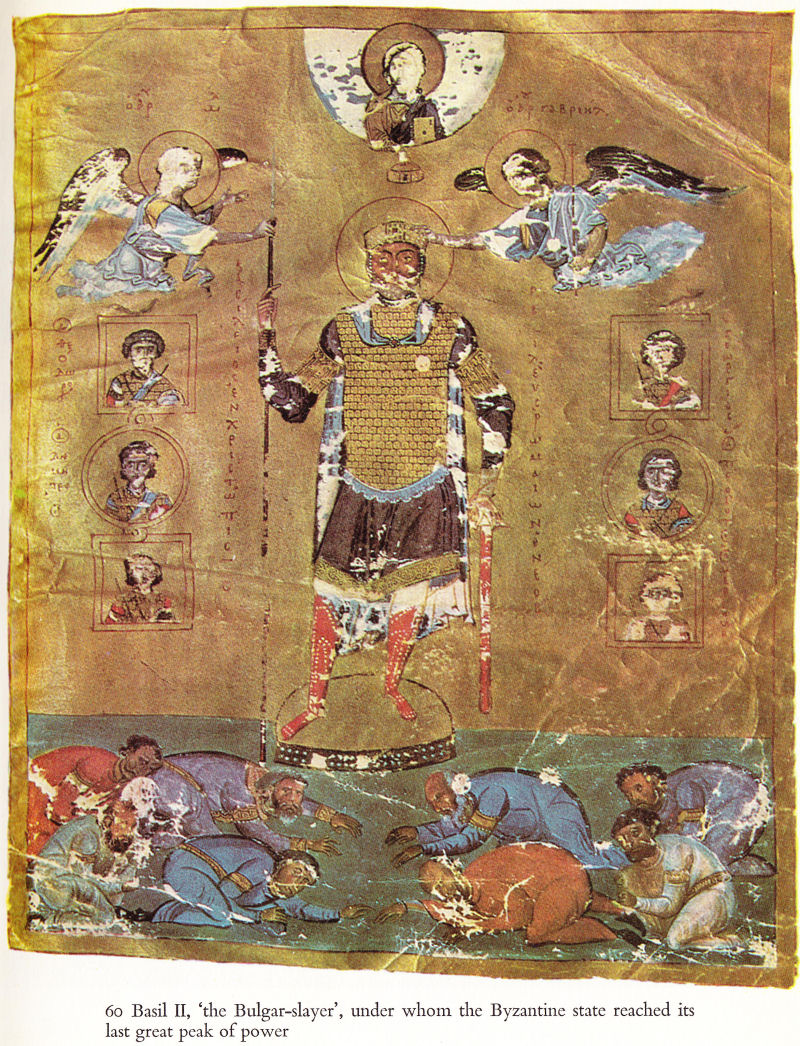
66, 67 Textile-workers were notable among Constantinople’s craftsmen. This silk-weaving of the mid-eighth century (left) shows two riders hunting lions. Below, detail of a late tenth-century silk shroud
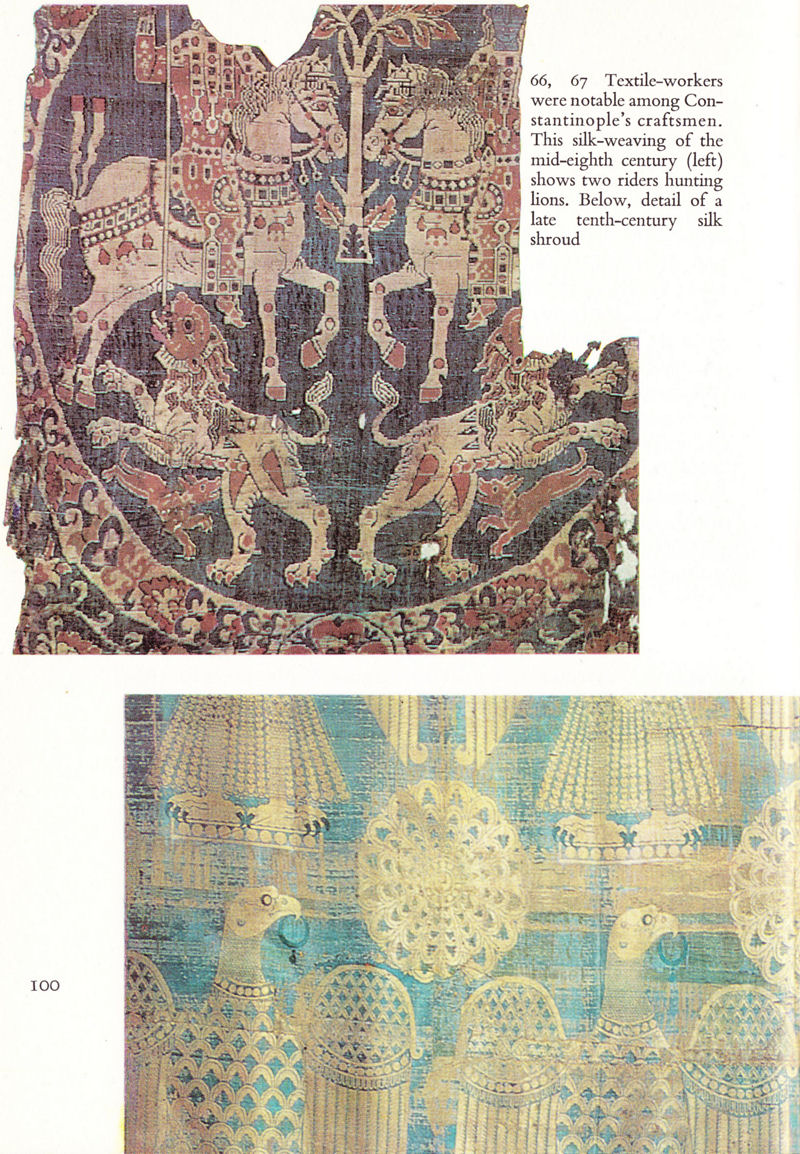
68 This eighth-century silk textile portrays a lion strangler — Samson, or possibly Hercules
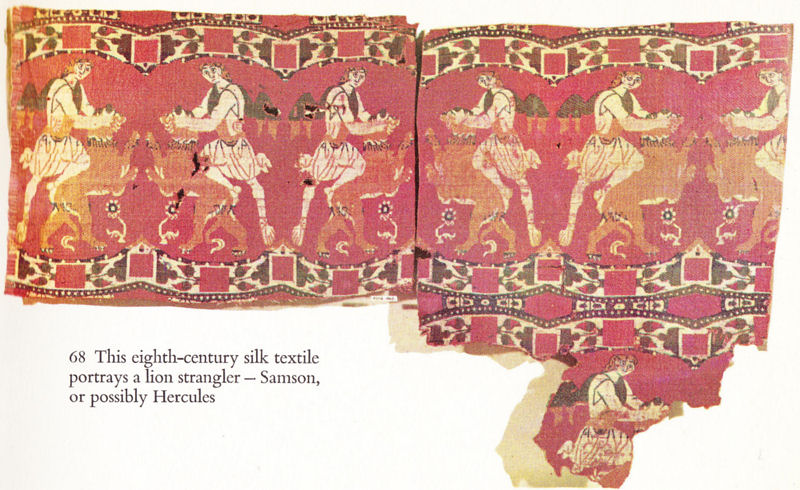
71 The monastery of St Catherine’s, built by Justinian, contains the only extensive collection of pre-iconoclast Byzantine images, including this sixth-century Virgin enthroned
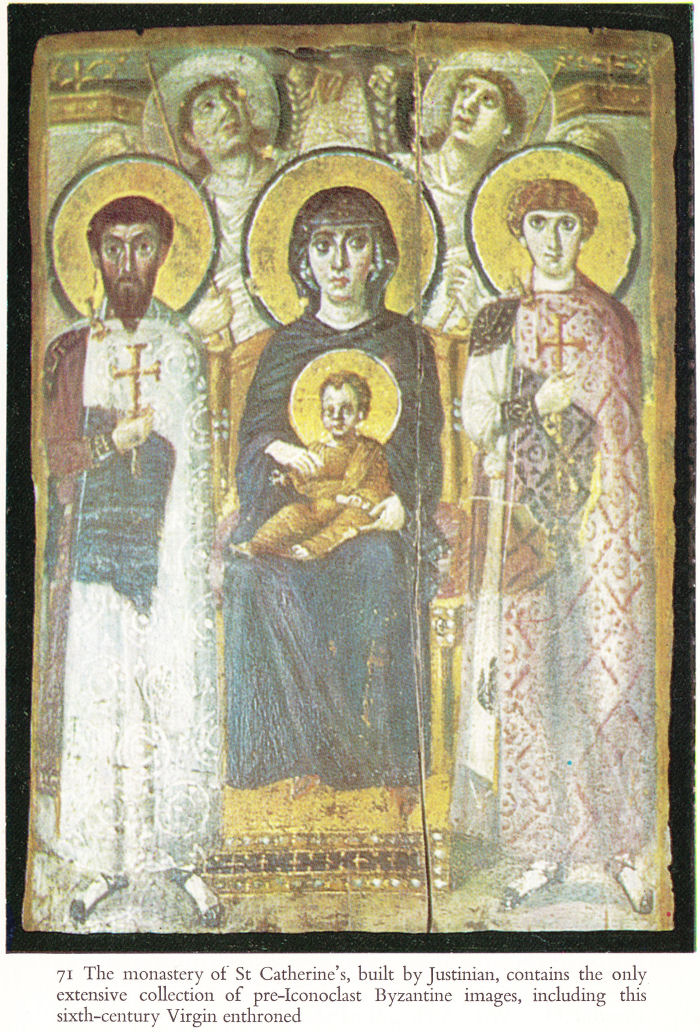
74 Christ Pantocrator, ruler and stem judge. Dome mosaic at Daphni, near Athens, c. 1199
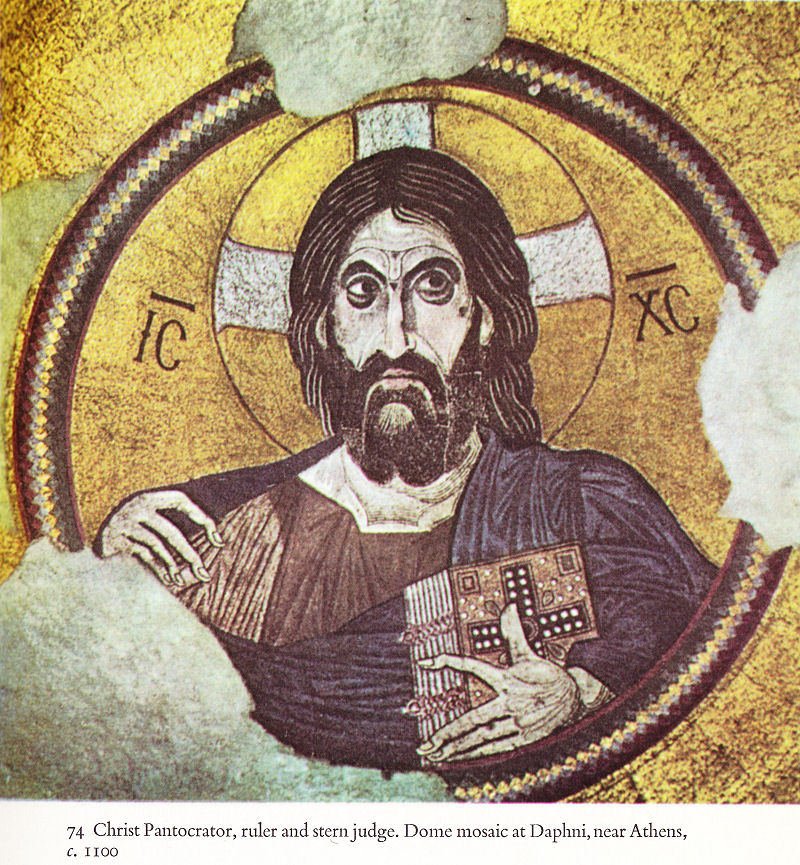
77 This enamelled container for a relic of the True Cross, decorated with jewels and cloisonne enamels, was made around 960

80 The monastic reaction against secular Hellenism. Paradise and the Four Rivers, from the twelfth-century Homilies of Jacob of Kokinobaphos
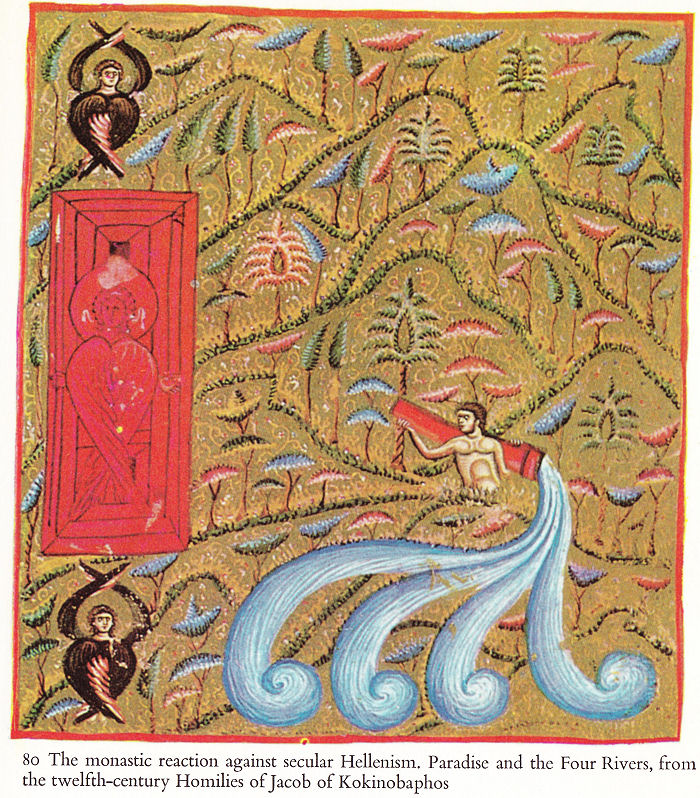
82 The emperor Nicephorus III Botaniates (1078-81) between St John Chrysostom and the Archangel Michael
